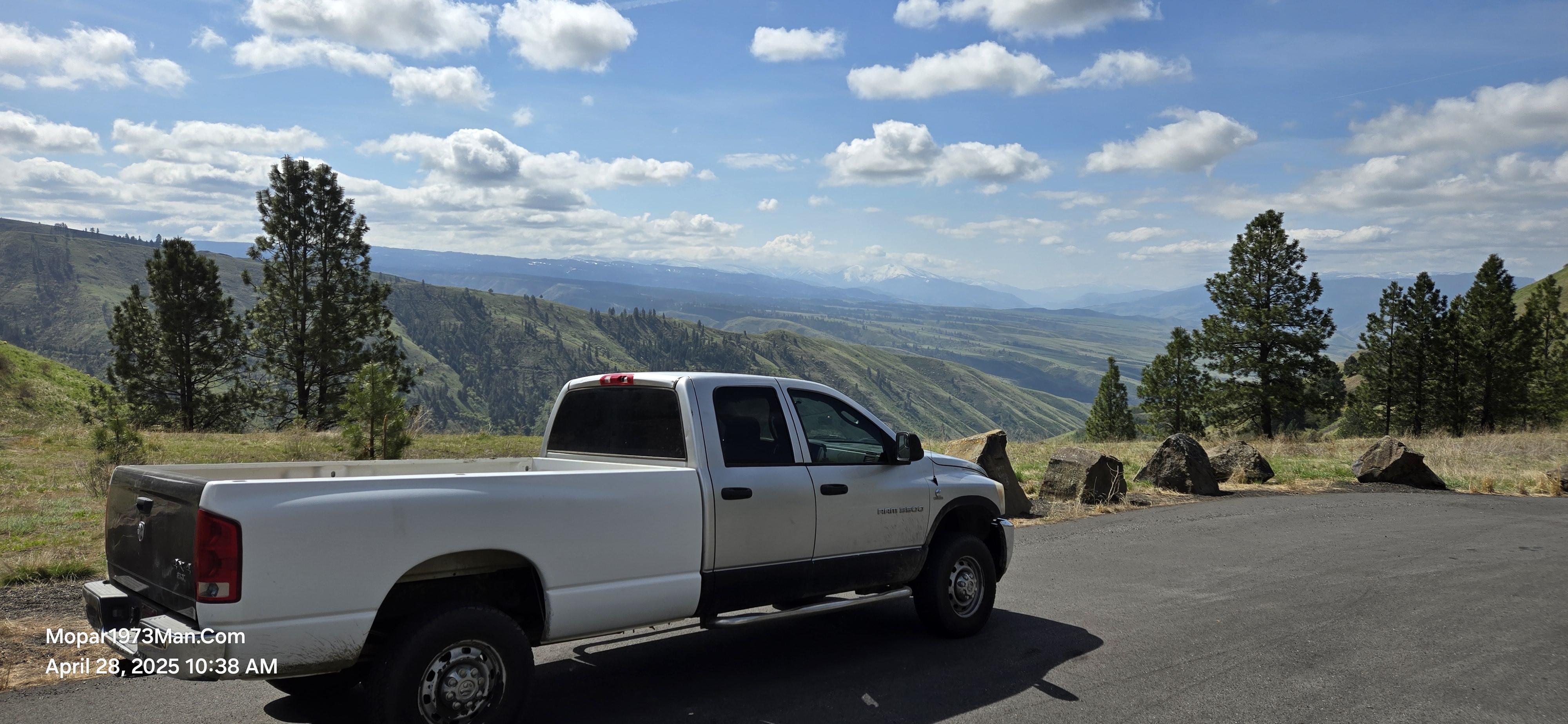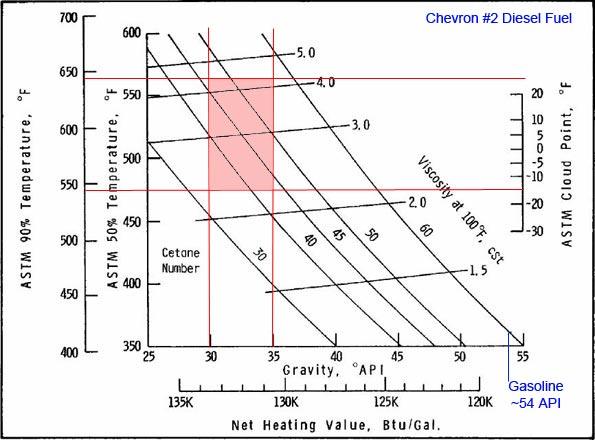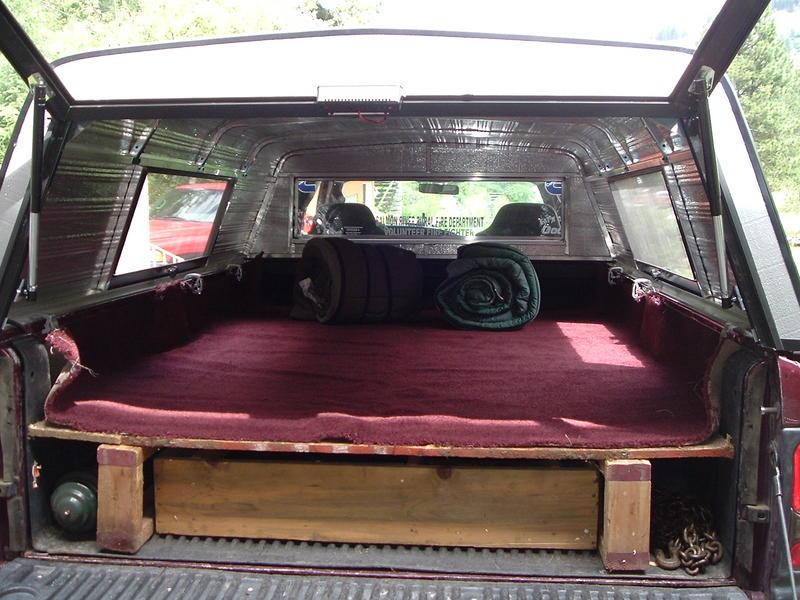
Everything posted by Mopar1973Man
-
No power on start up - couple minutes go by and its fine. 2001 3500
Yeah he's right but I will make a few notes here to correct a few things... LiveOak is right aboutthe VP44 being toast... The p0216 is a phyiscal wear code. It when the advancement cam can no longer obtain proper timing when the ECM request it so hence the ECM tag the p0216 code... But as for the P0122 that is cause by a wore spot in the APPS sensor and the voltage level drops below .5 Volts for a split second since the voltage is off the map the ECM goes to a limp mode ignoring the throttle. the P1757 and P1762 are both transmission codes... P1762 - Gov Press Sen Offset Volts Too Lo or High The Governor Pressure Sensor input is greater than a calibration limit or is less than a calibration limit for 3 consecutive park/neutral calibrations. P1757 - GOV Press Not Equal to Target @ 15-20 PSI The requested pressure and the actual pressure are not within a tolerance band for the Governor Control System which is used to regulate governor pressure to control shifts for 1st, 2nd, and 3rd gear (Zero Pressure Malfunction)
-
'01 24V with fuel pressure woes (go figure)
Comes down a simple solution... You demand volume is higher than supply volume... 1. Your tank pickup is plugged or restricted. 2. Lift pump(s) are not making the grade. 2a. Lift pump(s) being in series might be restrcitive. 2b. Overflow valve failed and stuck open.
-
Water in floor of cab
Another spot to check that is a common leak point is the top of the cab brake light. The foam gasket tend to shrink and leak... Most just give it a good shot of silcone and put it back up on the cab...
-
2001 Error Codes By Key Trick
Now do the 2 of you see p-pcu and p-ecu codes in the display?
-
CAI in Summer VS Warm Air in Winter
True... But what is weird I can climb a grade and be a 15-20 PSI of boost and still +40*F over outside temp or cruising main street Riggins, ID at 25 MPH and still be +40*F overside temp... For sure a 2nd gen thing...
-
VP44 Write Up - Minimum pressure suggested...
If your looking at it from a new perspective at least is a good thing... Maybe you'll see something we are all missing...
-
two cycle oil and?
Ok... As for your 2 questions... 1. As for 2 cycle oil plugging injectors, or coking, etc. Nope... It just won't happen. Started using 2 cycle oil solely at 85K miles and currnetly at 172K miles (87K total) and no problems. 2. As for injector cleaners... I got a set of use injectors from a member here that had over 400K miles on them I tried a small can of seafoam to a tank of fuel the truck seem to improve for the tank then after the tank was done back to random misfire at idle while hot. So I took the injectors apart and phyiscally cleaned them by hand and found that you can soak the injectors in coleman fuel (which is naptha main ingredient of most injector cleaners) but it will not clean anything... http://forum.mopar1973man.com/showthread.php/2023-Dirty-Injectors-Clean-them!
-
Oil Filter
I tend to hold true to the Cummins / Fleetguard filters... Also running Frantz filter too...
-
two cycle oil and?
This little graph was dropped on me by a guy that had access to the ASTM documents I wish I could get more of it... But everytime I plug everything into the chart I get the same answer... Take a premium diesel that 45-50 cetane always comes out with a lower BTU number... As for seeing this... I was a at a dyno event... Friend wanted to test the whole cetane booster vs 2 cycle oil... Needless to say cetane booster reduced his numbers (-20HP) and 2 cycle oil slight raised it (+10 HP)... Using a dual tank Cummins 97 truck. Same day... 3 different runs... * Straight diesel* 2 cycle oil (128:1 mix)* Popular Cetane Additive It was posted up on IBF.com till the site went down... Test was done in Meridian Idaho at Meridian Motorsports. I've only seen the test done once so there might be more to it... That's all I got to give...
-
two cycle oil and?
Here is my local chevron station... Just for fun I looked up the API of unleaded gasoline... At it average about 54...
-
two cycle oil and?
Increasing cetane will reduce BTU's one way or another... Here I did this a while back... This is a local fuel station I ask for the specs on the fuel back in 2007 and this what I got from a local fuel station... Dark green = #2 Summer Diesel Light green = #2 Winterized Diesel Where the lines cross in the cetane... ASTM LABS GRADING SCALE All I can say it give it a whirl... Use any brand of fuel and you'll come to the same answer...
-
two cycle oil and?
More tidbits... Petroleum Distillates/Light Distillates This category includes a long list of different ingredients. The one common trait, however, is that all of these ingredients are parts of, or "distillates" of raw, unrefined petroleum. Once petroleum goes through the distillation process, these ingredients are formed. When an additive states that it contains "petroleum distillates" on the MSDS, it is basically giving a vague, undescriptive reference to what is actually in it. Petroleum distillates can include solvents, paint thinners, motor oil, car wax, and many other household products. The most common types of petroleum distillates in additives include: mineral spirits, stoddard solvents, white spirits, and solvent naphtha. Mineral Spirits aka Stoddard Solvent Essentially, all of these are types of solvents and paint thinners. In most industries, mineral spirits are used for cleaning and de-greasing machinery. However, in the fuel additive industry, the main use of mineral spirits is to clean the fuel system. When an additive claims it is a "cleaner" it most likely contains some form of mineral spirits. Do not use additives that contain a large amount of mineral spirits. Ethanol is already a solvent, rendering the "cleaning" effect of mineral spirits useless and in some cases, detrimental. Too many solvents can strip away from the vital rubber seals and gaskets of the fuel system and cause premature fuel pump failure. http://en.wikipedia.org/wiki/White_spirit Naphtha Solvents Also known as Mineral Turpentine. Like mineral spirits, naphtha solvents essentially are solvents. They are commonly used as paint thinners and cleaning machinery. Much like mineral spirits, it is used in the fuel additive industry for its cleaning properties. Do not use additives that contain a high amount of naphtha solvents. http://en.wikipedia.org/wiki/Naptha Alcohols The worst ingredient one can use with fuel. Some additives use alcohol for its ability to attract and combine water with fuel. Stay away from any additive that contains alcohol. Some common alcohols used in fuel additives include isopropyl alcohol, ethylene glycol, butyl alcohol, and hexanol. Isopropyl Alcohol Commonly used as rubbing alcohol - it is extremely solvent and dangerous for your engine. Some use it for its ability to attract and combine water. http://en.wikipedia.org/wiki/Isopropyl_Alcohol Butyl Alcohol/Hexanol Essentially another form of alcohol, this ingredient exhibits the same properties as the alcohols above and should never be used. http://en.wikipedia.org/wiki/Butyl_Alcohol
-
two cycle oil and?
Actually I suggest against mixing... Most all over the counter name brand products are a cetane booster type product. 2 Cycle Oil is a cetane reducer by nature. Lower the cetane the more BTU's are delievered by the fuel to the engine. Point of reference that unleaded gasoline has a API gravity of around 50-55 and BTU content around 120... So more you drive cetane up the lower the amount of energy your creating with you fuel. Very interresting to get a MSDS sheet of your favorite product and look over the chemical used in it and very very rare will you ever find a lubricant in a additive. Most are made from the common 3... * Naptha (Coleman Fuel) * Xylene (Common paint thinner sold at you local hardware store for about $8 bucks a gallon) * Napthalene (Mothball - Yeah those nasty smelling little balls) These are great for increasing the cetane of the fuel which it does. Also great for solvency for cleaning but look closely that most don't have a lubricant... Also be very aware that there is a few of these chemicals that are cancer causing... MSDS Sheets I've got... (Need to update this a bit more!) http://mopar.mopar1973man.com/cummins/general/2-cycle-oil/msds/msds.htm
-
Hello
Welcome to the site! There is no such thing as a dumb question we are all here to learn from each other... Congrads on your first injection pump install and hopefully you can catch one of the high mileage member with time. Jump in and get your feet wet...
-
Heading towards Sandpoint Idaho...
Not by much...
-
windshield wipers
See the poor mans ideas always come first because what do you have to lose in trying to fix the old wiper motor? Nothing its already broke so if you fix it (even with a bandaid) your ahead...
-
Heading towards Sandpoint Idaho...
Your next on my trip list head towards Kuna ID...
-
Heading towards Sandpoint Idaho...
Well Gang... I'm going to make a fun trip to Sandpoint, ID... Just to say I've done it... Never been to Sandpoint or the Canadian Border but I figure it would be fun to just haul up there and wonder around... I've pulled my side racks off and got the topper back on and my carpeted deck and utility draw back in... So I'm ready to travel... (Older pic)
-
Diesel fuel vs. pecan
Your not the first to tell me that... But its all good...
-
Another load of firewood.
THANKS...
-
Over engineered boost regulator
Ok... Now your done with both alpha and beta stags of design lets see a test run...
-
windshield wipers
Well the cheap side of me says to pull the wiper motor off and see if you can fix it. The relable side of me says to just replace the wiper motor... Price is $65 bucks at NAPA and there is a core charge...
-
windshield wipers
I'm assuming the wipers stop on the glass and that's it? That would most likely be a broke reed switch in the wiper motor. I've had this exact same problem on my 1973 Charger SE. When I took the motor assembly apart I found the reed broke off intenrally. I end up just replacing the wiper motor...
-
Over engineered boost regulator
Ok.. Where is the test run?
-
horesepower
Yeah you be really close to around 300 HP on a guess...





